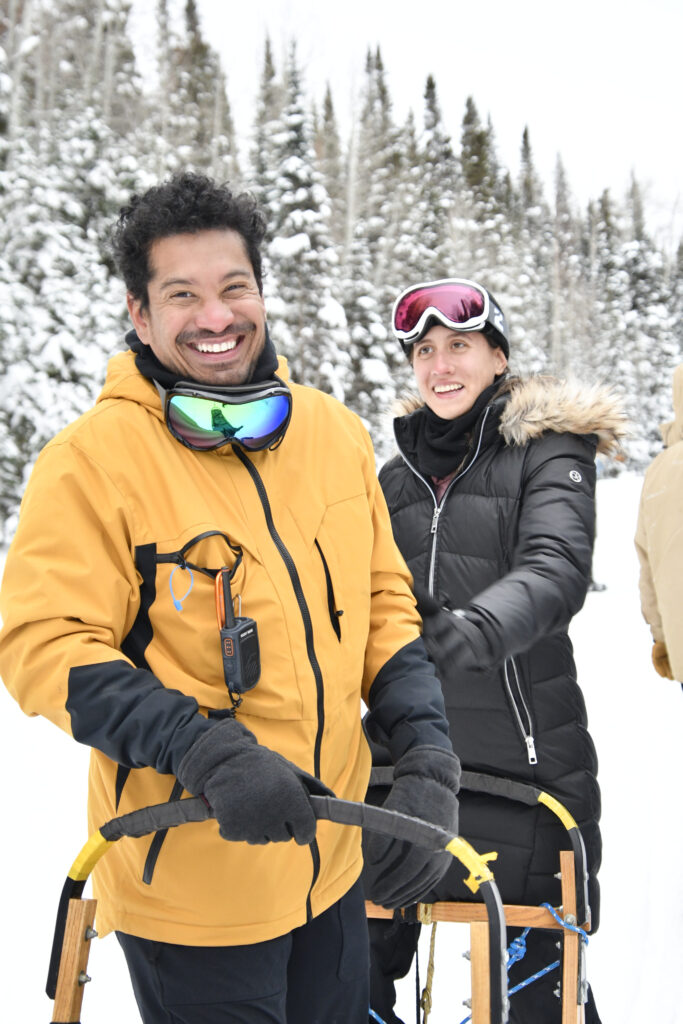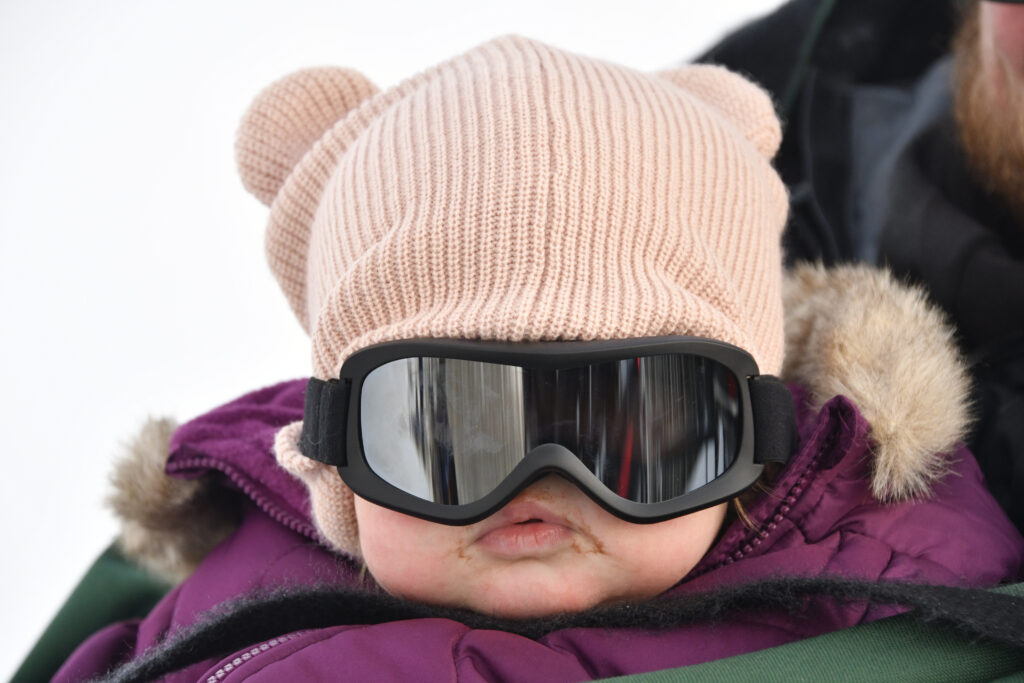We've Got You Covered
Don’t worry if you don’t have all the winter gear we provide nearly everything you’ll need at no extra charge. From PAC boots to stylish one-piece snowsuits, we’ve got plenty of warm, high-quality gear available for you to borrow.
We encourage guests to bring their own layers and dress as best they can for the conditions, but please don’t feel like you need to spend hundreds of dollars on special gear for your adventure. The only items you’ll need to bring yourself are socks and long underwear we’ll handle the rest!
We provide most gear at no additional charge, including PAC boots and stylish one-piece snowsuits. Just let Sarah know when you make your reservation if you need to borrow anything — we’ll make sure it’s ready for you. See the gear list below for additional suggestions.
When your core temperature begins to drop, your body starts a process called shunting — it redirects blood from your hands and feet to your core to protect vital organs. Without enough warmth around your torso, your hands and feet can quickly get very cold. We often see guests try to fix this by adding more socks or warmers, but the real solution is warm, loose-fitting layers and quality boots — even we follow this rule every day!
If you’re coming from a lower elevation or a warmer climate, you’ll need to dress extra warmly and keep skin exposure to a minimum. Don’t worry if you don’t own expensive snow gear — we’ve got you covered. Please come prepared, and feel free to call with any questions. Remember, there’s no bad weather — just the wrong gear!
What to Wear
You’re welcome to bring a small backpack for personal items — there’s plenty of space on the sled to store it comfortably inside or at your feet if you’re riding along.
Don’t worry about gear — we provide most items at no additional charge, including PAC boots and stylish one-piece snowsuits. Just bring your own socks and long underwear, and we’ll take care of the rest.

